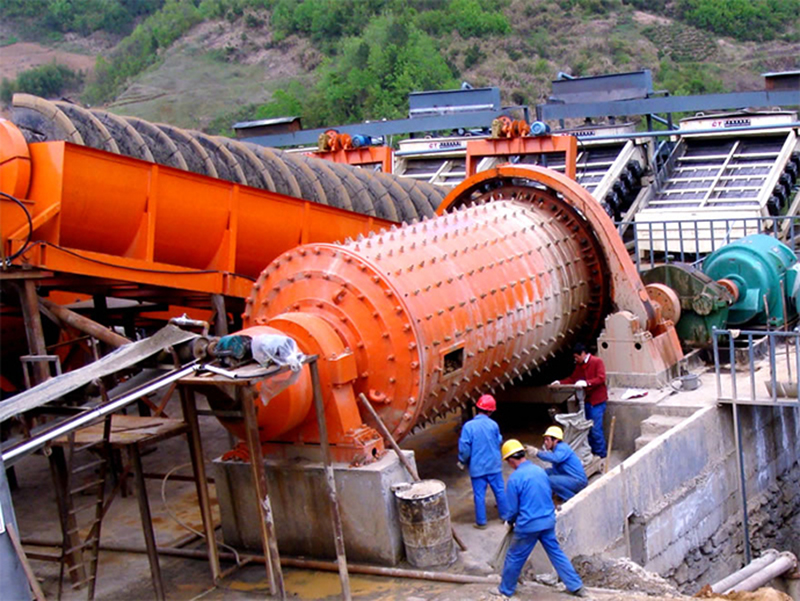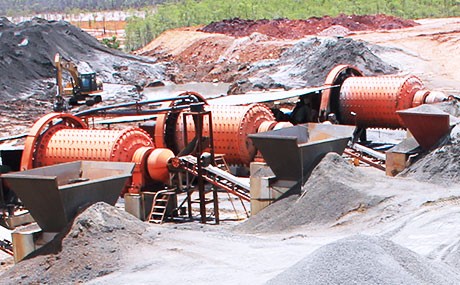Industry news
Circulating closed-circuit grinding ball mill to improve mineral processing efficiency
Ball mills are commonly used equipment for grinding mines in selected factories, so what is a closed-circuit ball mill?In fact, a closed-circuit ball mill refers to a system that adds a grading equipment (such as a spiral classifier, hydrocyclone, etc.) to the discharge end of the ball mill to grade the ground material.The working principle of this system is that materials that meet the required fineness will be discharged as the final product, while unqualified coarse materials will be returned to the ball mill for grinding again.

So is this grinding method reliable?Does it have any advantages and disadvantages?Let's take a look.
1. Advantages of closed-circuit ball mills
The advantages of closed-circuit ball mills are obvious. After the particle size of the material is found to be unqualified, it is directly returned to the ball mill for re-grinding, saving process and time, improving grinding efficiency, the fineness of the material is up to standard, and the quality of the final product is also guaranteed.
Moreover, the ground qualified products will be quickly discharged from the ore discharge end, which can also reduce the phenomenon of over-grinding, reduce steel ball consumption and energy consumption, and the entire operation process is also very stable, which can reduce fluctuations in the production process and make the product fineness more uniform.
2. Disadvantages of closed-circuit ball mills
We say that things have two sides, and things that have only advantages do not exist. So where are the disadvantages of closed-circuit ball mills?First of all, the cost of equipment is relatively high, because the closed-circuit grinding system adds additional grading equipment, which increases the investment cost; in addition, the maintenance workload is also multiplied, because in addition to the ball mill, we have to maintain an additional classifier; also, the requirements for operators have also increased, because it is necessary to accurately control the circulating load, so it is best to let experienced workers operate.
3. Application scenarios of closed-circuit ball mill
In fact, most mineral processing plants now use closed-circuit grinding systems. For those mineral processing plants with higher and stricter requirements for product fineness, this kind of closed-circuit grinding equipment is more suitable.For example, quartz sanding ore, which requires high fineness, is very suitable for closed-circuit ball mills.
4. the model and parameters of the closed-circuit ball mill
Like ordinary ball mills, closed-circuit ball mills have different models and parameters. Their models are named according to the diameter and length of the ball mill cylinder, and the parameters of different types of ball mills vary greatly.We can divide many models according to size, divided into small, medium and large ball mills.
· Small closed-circuit ball mill: diameter 0.9-1.8 meters, length 1.8-3.5 meters, suitable for laboratory or small-scale production.
· Medium-sized closed-circuit ball mill: diameter 2.2-3.8 meters, length 4-7 meters, suitable for medium-scale industrial production.
· Large-scale closed-circuit ball mill: 4-5 meters in diameter and 10-15 meters in length, suitable for large-scale industrial production.

Although the closed-circuit ball mill has relatively high input costs and maintenance costs, compared with its advantages, these disadvantages are negligible. After all, the final output and income are the goals we tirelessly pursue. Closed-circuit ball mills can bring us higher grinding efficiency, better products, and greater benefits. It is a commonly used grinding system in modern mineral processing plants.
Categories
News
Contact Us
Contact: XKJ GROUP
Phone: 0086 138 3714 0277
Tel: 0371-65751333
E-mail: sales01@xkjgroup.com
Add: Xing yang city, Zheng zhou city, Henan province, China